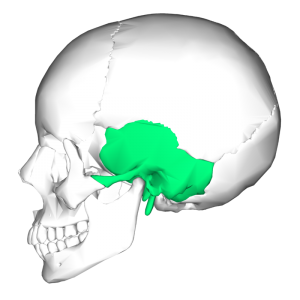The TMJ, which we all have, is often confused with TMD that we don’t want. TMJ is the temporomandibular joint or the joint of the jaw.
The temporal and mandibular bones form this synovial joint. TMD refers to temporomandibular disorders, or dysfunction, which I will get to in another post after this basic introduction of the temporomandibular joint.
When we are born our head and pelvis are not fully formed.
The head is in separate pieces at birth so that it can pass through the pelvis during labor. These separate plates slide into place soon after birth.
The type of joint that holds the bones of the skull together are fibrous joints called sutures and are found only in the skull.
The sutures that hold the bones of the head together have no real movement within them but craniosacral therapy, a beautifully subtle practice, is based on the premise of regulating the body’s flow of cerebrospinal fluid through the through the energetic balancing of the sutures of the skull. As if they breathed the pulse of life.
The skull has two parts, the neurocranium and the viscerocranium. The temporal bones are part of the neurocranium.
There are eight bones in the neurocranium held together by these sutures.
The mandible is the jaw bone, the only bone of the head not joined together by sutures.
Everything we do with our mouth—talk, chew, laugh—is facilitated by the temporomandibular joint, a somewhat flexible hinge joint that provides the freedom for the jaw to move up and down and side to side.
Stay tuned for a post about all of the many things that can go south when the temporomandibular joint is involved such as headaches, tightness of the jaw, ear pain, shoulder pain and more.
***




